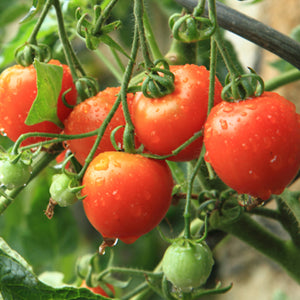Companion planting (growing certain plants side by side) helps your garden to thrive by pairing up natural allies. Certain plants repel insects whilst others attract pollinators, some help to rejuvenate soil or provide shade that minimises the growth of weeds. The concept has been around for centuries, and many people swear by it. However, there isn’t a whole lot of scientific backing for companion planting. It’s also not a quick fix for a struggling garden but can certainly help to improve your garden’s biodiversity.
A good way to start your companion planting is to learn which families of plant complement each other best. For example, the cabbage family (including cauliflower, broccoli and Brussels sprout) and the green leafy vegetable family (for example lettuce and spinach).
Below I’ve listed a few classic combinations and why they work so well together.
Strawberries and Spinach

Strawberries and spinach don’t take their nutrients from the same levels of soil, thus they don’t compete with each other. Also, because spinach grows tall in a short space of time, it provides great shade for the strawberry.
Cabbage and Chamomile

Chamomile repels flies, mosquitos and carrot flies – common pests that hinder the growth of healthy cabbages.
Corn and Beans

Corn, beans and squash are referred to as the “Three Sisters” and have been planted together by Native Americans for centuries. Corn and beans work well together because the corn provides a climbing frame for the beans, whilst beans stabilise corn plants and help prevent them blowing over in the wind. Beans also improve the fertility of the garden by fixing nitrogen on their roots.
Roses and Garlic 
Planting garlic and chives with your roses can deter pests including aphids by confusing them with their strong scent. They also help roses combat black spot.
Potatoes and Sweet Alyssum

Sweet Alyssum flowers attract predatory wasps, hoverflies and other beneficial insects that help control pests.
Tomato and Basil

Supposedly, planting tomato and basil together enhances the tomato’s flavour because they share the same soil nutrients. Basil also helps to repel flies and mosquitoes with its strong aroma.
Carrot and Rosemary

Rosemary (and sage) deter cabbage moth, bean beetles and carrot fly – an especially nasty pest for the carrot.
Cucumber and Sunflower

A strange-sounding combination, these two make a great pair as the cucumber’s leaves keep the soil moist and reduce weeds by providing shade. In turn, the sunflower’s stalks provide support for cucumber vines.
Asparagus and Parsley

Parsley repels pesky asparagus beetles, as well as providing shade and cover for soil.
An important thing to remember when companion planting is that, whilst some plants aid the development of their neighbours, others can hinder growth. For example, cucumbers do not grow well near potatoes because they don’t get enough nutrients and moisture. On top of that, potatoes release a chemical that impedes the cucumber’s growth.
Give companion planting a go in your garden!











